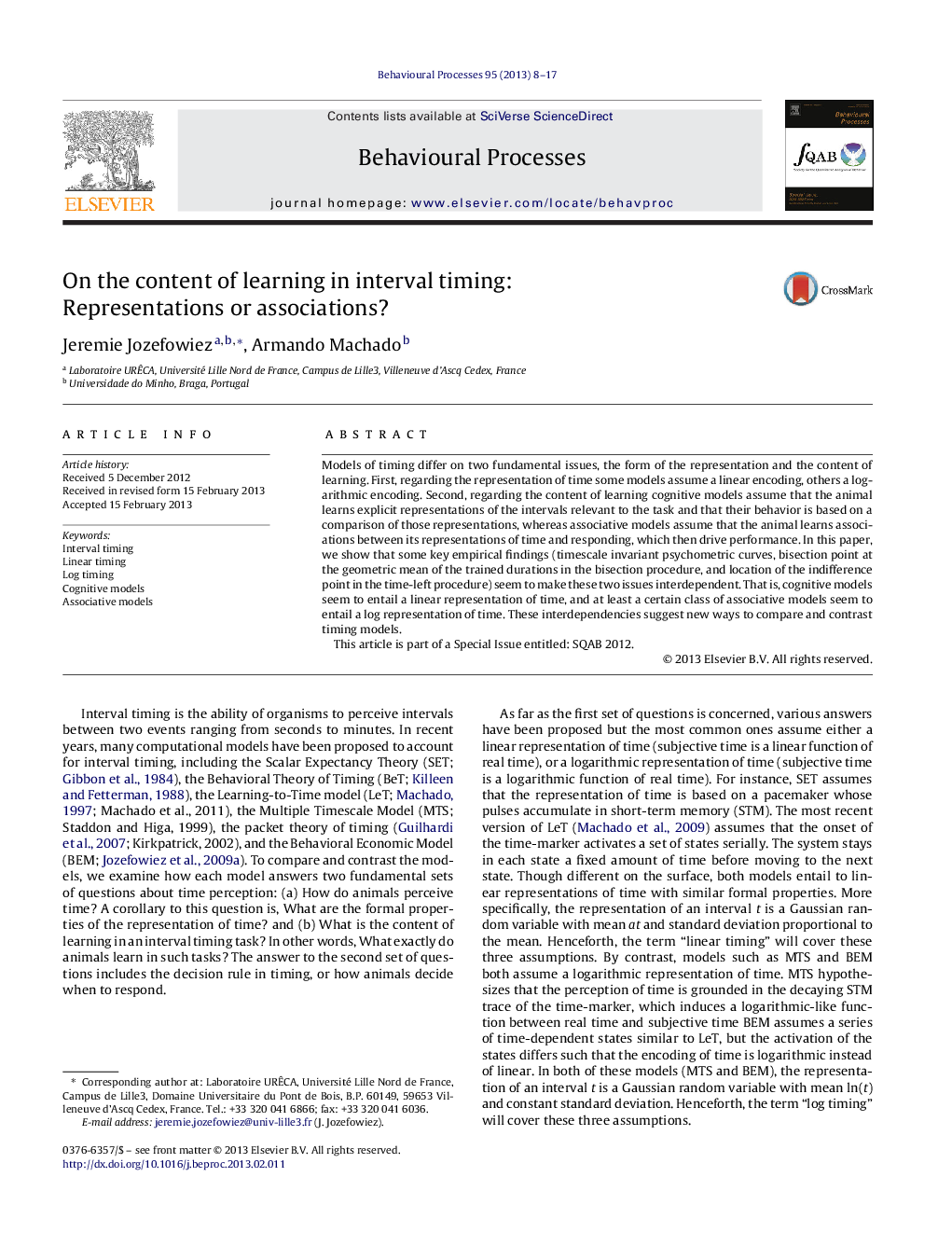| کد مقاله | کد نشریه | سال انتشار | مقاله انگلیسی | نسخه تمام متن |
|---|---|---|---|---|
| 2426848 | 1553184 | 2013 | 10 صفحه PDF | دانلود رایگان |

Models of timing differ on two fundamental issues, the form of the representation and the content of learning. First, regarding the representation of time some models assume a linear encoding, others a logarithmic encoding. Second, regarding the content of learning cognitive models assume that the animal learns explicit representations of the intervals relevant to the task and that their behavior is based on a comparison of those representations, whereas associative models assume that the animal learns associations between its representations of time and responding, which then drive performance. In this paper, we show that some key empirical findings (timescale invariant psychometric curves, bisection point at the geometric mean of the trained durations in the bisection procedure, and location of the indifference point in the time-left procedure) seem to make these two issues interdependent. That is, cognitive models seem to entail a linear representation of time, and at least a certain class of associative models seem to entail a log representation of time. These interdependencies suggest new ways to compare and contrast timing models.This article is part of a Special Issue entitled: SQAB 2012.
► We consider timing models assuming a linear vs. log time representation and a cognitive vs. associative decision process.
► We show that log timing might entail an associative decision process.
► Conversely, linear timing might entail a cognitive decision process.
► Some problematic results for linear timing, and hence for cognitive models, are reviewed.
Journal: Behavioural Processes - Volume 95, May 2013, Pages 8–17